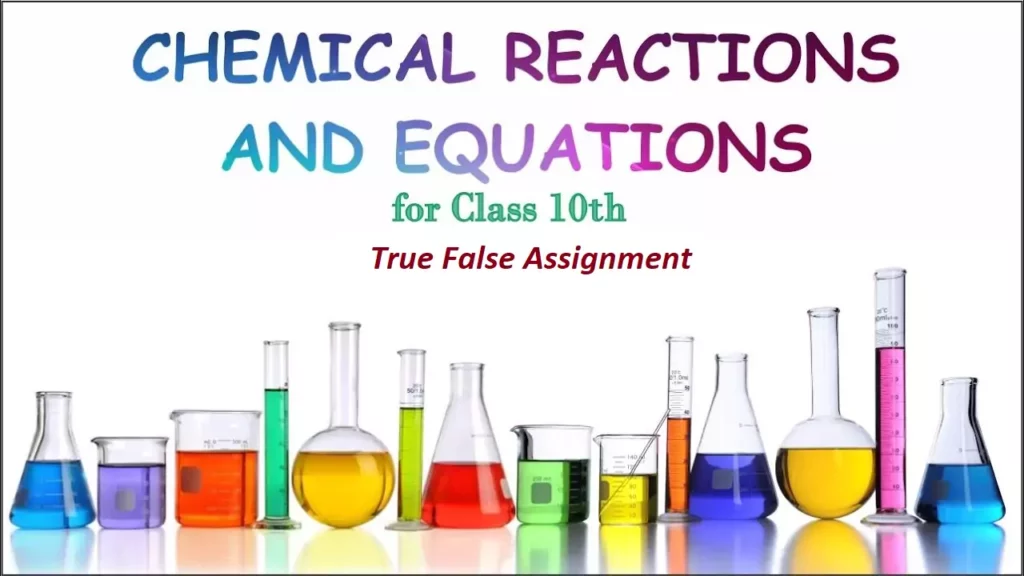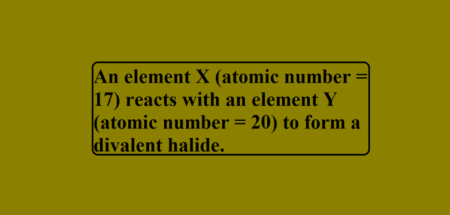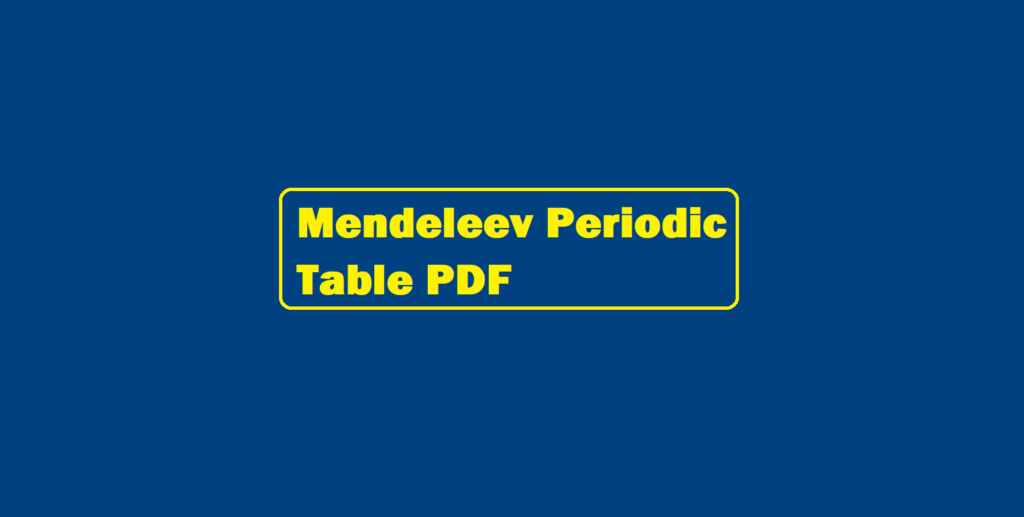The Post True False Assignment Chemical Reactions and Equations contains subjective questions along with fill-ups and true-false type questions. This will help the students in improving the chapter knowledge.
True False Assignment Chemical Reactions and Equations
Q 36. Choose the correct about rancidity (i) Rancidity is a reduction process (ii) Rancidity is an oxidation process
Q 37. When silver coloured metal (A) is added to dilute sulphuric acid, solution (B) is formed which is a colourless solution and a gas (c) is evolved which is the colourless name ‘A’, ‘B’ and ‘C’ and write the equation?
Q 38. An ‘A’ blue coloured crystalline salt on heating decomposes to ‘B’ white substance. When in a blue salt solution, a metal (Zinc) is added, it gives rise to colourless solution ‘C’ with leaving behind ‘D’ reddish-brown metal. Name the compounds ‘A’, ‘B’, ‘C’ and ‘D’
Q 39. A mixture of Chromium Oxide is heated with Aluminium powder: a) Write the reaction? b). Give one application of this reaction?
Q 40. Choose and state as true or false
- In an exothermic reaction, heat is evolved. True / False
- Decomposition is possible by thermal decomposition, electrolytic decomposition and by photochemical decomposition. True / False
- The displacement reaction of metals is based on reactivity series of metals. True / False
- The oxidising agent is a substance that causes the addition of oxygen or the removal of hydrogen from other substances. True / False
- The reduction is a process that involves the removal of hydrogen and the addition of oxygen. True / False
Q 41. Give a word fill in the blank
- The substance which causes the addition of oxygen or removal of hydrogen from other substances is … …….. agent.
- The presence of air, the presence of moisture, the presence of salt in water, electropositive metals leads a metal to ……… …
- …… …………metals are less electropositive and hence they do not corrode in moist air.
- A reaction in which an insoluble product formed during the reaction of two ionic compounds in an aqueous solution is called ……. reaction.
- A substance that causes the addition of Hydrogen or removal of Oxygen from another substances is called ……….
- The arrangement of elements in decreasing order of their electropositive character is called ………
- When sodium metal is added to water, it gets …….
- In the order of decreasing order of reactivity in Ca > Al > Zn > H > Ag > Pt The most reactive metal is …………….
- In the order of decreasing order of reactivity as stated above the least reactive metal is …………………
- In the order of Ca > Al > Zn > H > Ag > Pt Choose the metal which from above can react with all the salt solutions. ……………
Activity-based One line – Two-line quiz questions
Q 42. Why do we preserve Sodium metal in kerosene oil?
Q 43. What happens when we heat coloured crystalline copper sulphate?
Q 44. In electrolysis of water, on which electrode does hydrogen migrates and why?
Q 45. What happens when quick lime is added to water? Name the reaction and compounds formed.
Q 46. What happens to green coloured Iron sulphate crystals on heating?
Q 47. Why does the white precipitate of AgCl change to grey on exposure to light?
Q 48. Why does silver or gold not react easily when exposed to air or light?
Q 49. Why does ZnSO4 solution not react with Cu(s)?
Q 50. How would you conclude that rusting is a slow electrochemical reaction?
To check answers click the link below
https://sciencemotive.com/class-10/answers-true-false-chemical-reactions-and-equations/


